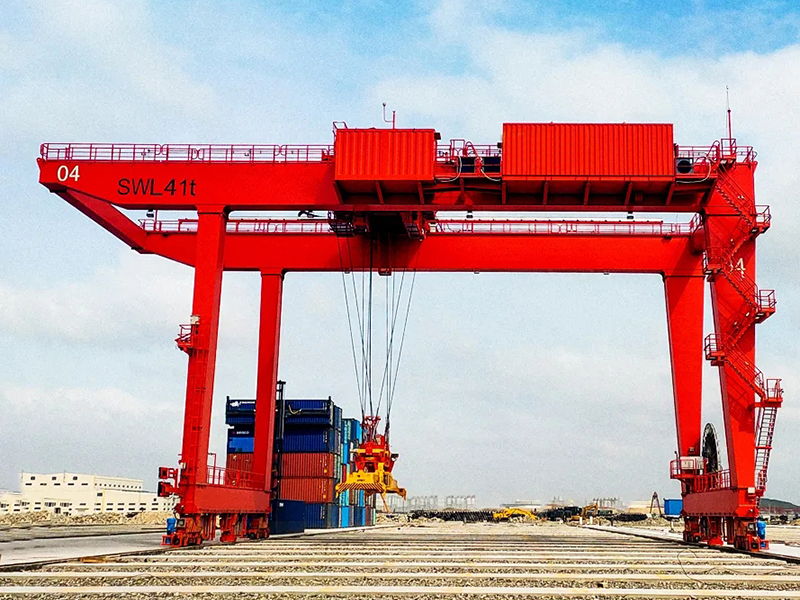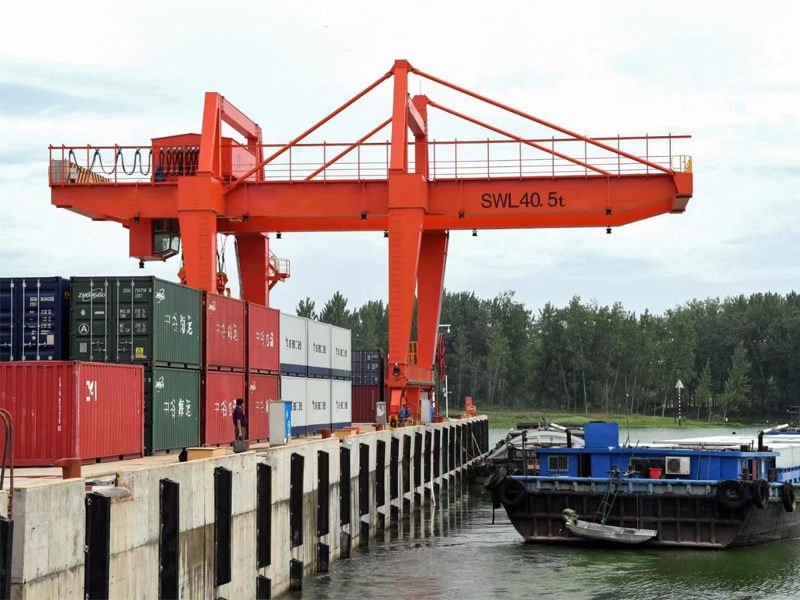In the ever-evolving landscape of logistics and container handling, automation has emerged as a game-changer, revolutionizing the efficiency and precision of cargo operations. One such technological marvel is the Automated Rail-Mounted Gantry Crane (ARMG). This sophisticated piece of machinery has significantly transformed container terminals, providing a seamless and efficient solution to the challenges faced in the contemporary shipping industry.

Understanding the Automated Rail-Mounted Gantry Crane
The Automated Rail-Mounted Gantry Crane, commonly known as ARMG, is a specialized type of container gantry crane designed for the efficient handling of containers in ports and intermodal terminals. Unlike traditional cranes operated by human operators, ARMGs are fully automated and are mounted on rails, allowing them to traverse the entire length of a container yard with unmatched precision.
Key Features and Components of RMG Crane
Rail-Mounted Mobility: The distinctive feature of ARMGs is their ability to move along a set of rails, providing a high degree of flexibility and coverage within the container yard. This rail-mounted mobility allows ARMGs to access multiple rows of containers without the need for complex repositioning.
Automated Control System: ARMGs are equipped with advanced automation and control systems that enable them to operate without human intervention. These systems are programmed to handle various tasks, including container retrieval, stacking, and transportation. The integration of sensors and cameras ensures accurate positioning and collision avoidance.
Telescopic Spreaders: The lifting mechanism of ARMGs typically includes telescopic spreaders that can extend or retract to accommodate different container sizes. This flexibility in handling various container dimensions enhances the crane’s versatility and operational efficiency.
Energy-Efficient Design: Many ARMGs are designed with energy efficiency in mind. They often incorporate regenerative braking systems to capture and reuse energy during operations, contributing to a more sustainable and environmentally friendly approach to container handling.

Advantages of Automated Rail-Mounted Gantry Cranes
Increased Efficiency: Automation eliminates the need for manual intervention in routine container handling tasks, leading to increased operational efficiency. ARMGs can work continuously, 24/7, minimizing downtime and improving the overall throughput of container terminals.
Precision and Accuracy: The automated control systems of automated rail mounted gantry cranes ensure precise and accurate container positioning. This reduces the risk of errors and improves the overall safety of container handling operations in busy terminals.
Space Optimization: The rail-mounted mobility of ARMGs allows them to navigate efficiently within the container yard, optimizing the use of available space. This is crucial in densely populated container terminals where space utilization is a critical factor in operational success.
Cost Savings: While the initial investment in automated technology may be significant, the long-term cost savings are often substantial. Reduced labor costs, increased operational efficiency, and lower maintenance requirements contribute to the financial viability of implementing ARMGs in container terminals.
Challenges and Considerations
High Initial Investment: The deployment of Automated Rail-Mounted Gantry Cranes involves a considerable upfront investment. However, many operators in the shipping industry view this as a strategic long-term investment due to the potential for increased efficiency and cost savings.
Technical Maintenance: The complexity of automated systems requires specialized technical expertise for maintenance and repairs. Proper training and ongoing support are essential to ensure the continuous and reliable operation of ARMGs.
Adaptation to Existing Infrastructure: Retrofitting existing container terminals to accommodate ARMGs can be a logistical challenge. Ports considering the adoption of this technology must carefully assess their current infrastructure and plan for necessary modifications.
Conclusion
The Automated Rail-Mounted Gantry Crane represents a significant leap forward in the world of container handling, bringing automation and efficiency to the forefront of port and terminal operations. As the shipping industry continues to evolve and demand for faster, more reliable container handling grows, the adoption of ARMGs is likely to become more widespread. While challenges exist, the long-term benefits in terms of increased efficiency, precision, and cost savings position the ARMG as a key player in shaping the future of container logistics. For more info, visit https://steelmillcranes.com/